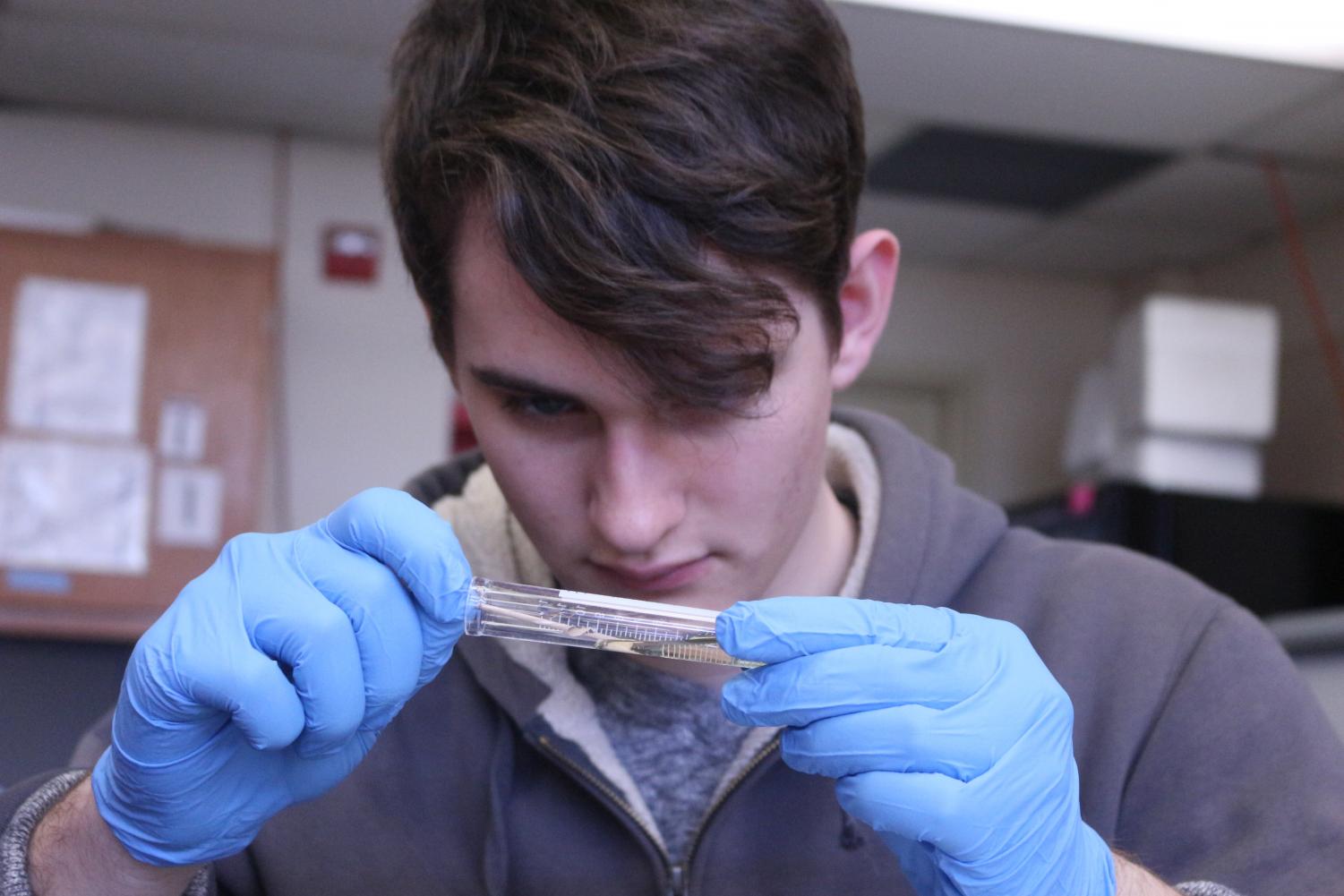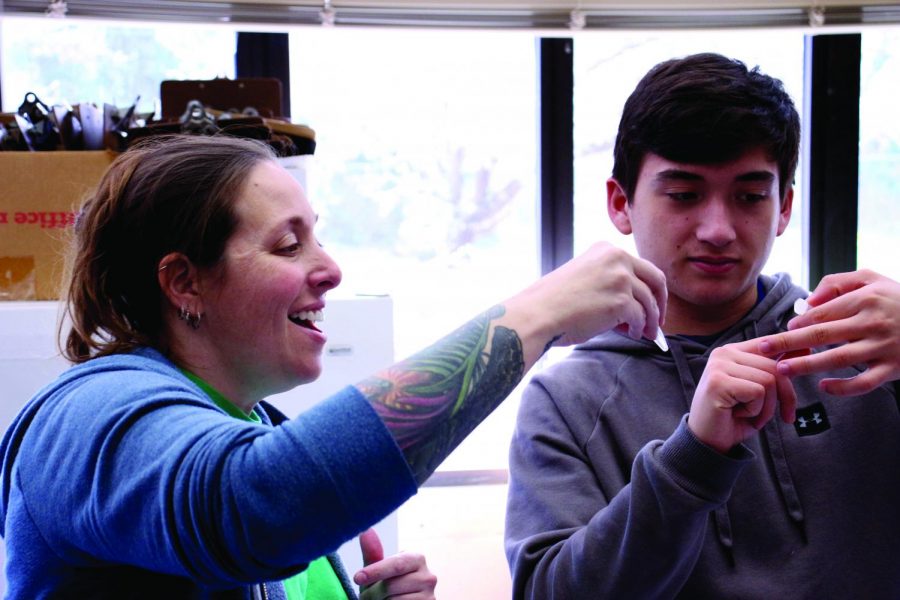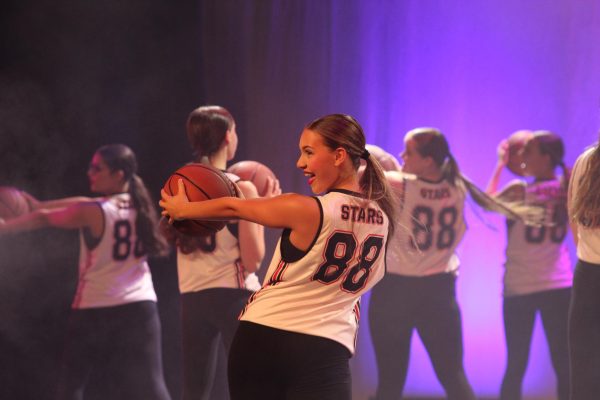SR&D does groundbreaking research
Junior and senior students participate in the Vertebrate Interactome Streaming Project
TROUBLE SHOOTING: SR&D teacher Alonna Beatty and junior Andres Sanchez work on figuring out what course of action Sanchez should take with his bacterial cell. Students’ in SR&D have their own projects that they are working on and no two students work is the same. “The teacher is more of someone that helps you trouble shoot, as opposed to someone who would tell you what to do and how to do it,” Beatty said.
For the past semester, Bowie’s Scientific Research and Design students have participated in the Vertebrate Interactive Streaming Project. They have been working with high schools and professional labs around the world to find out what specific proteins in the body do and how they function within the body.
With this information, SR&D students hope they can not only gain a better understanding of the human body and DNA, but also find out how proteins are linked to diseases to find cures.

GETTING THE MUNCHIES: Senior Reid Zavaleta works to get the bacteria on his toothpick into the food solution for it. The bacteria in the solution have to be put in a shaking incubator for a night so that they grow large enough for the students to place their DNA strand in it. “In SR&D we’re using bacteria cells to copy DNA, this makes it easier to work with a specific strand of DNA since we will have more copies to work with in our tests,” Zavaleta said.
Each student in Scientific Research and Design is given a different DNA sample that makes a different protein, so no two students’ work is the same.
“The uniqueness of this class is that every student gets their own different project that they’re assigned,” Scientific Research and Design teacher Alonna Beatty said. “So while they’re trying to do the same thing by altering DNA that will then produce an actual protein in a mammalian organism, in a human specifically, they have to figure out what they need to do and then they’re kind of on their own because their project is not the same as anyone else’s in their class.”
The students in the class are working on ground breaking research regarding DNA that is going on around the world in educational and professional labs.
“The fact of the matter is that this class is actually cutting edge research that may not have been done anywhere else in the world,” Beatty said. “Scientists are trying to figure out what these proteins in our bodies do and how we can mitigate some of the problems that people have in terms of diseases when their proteins don’t function correctly. So we are trying to figure out the source of those problems at the DNA level, so that we can possibly solve it at the DNA level.”

SENIOR ASSISTANCE: Senior Kaedon Solana works with junior SR&D students to pick out bacteria colonies. It is important to their research that they pick bacteria colonies correctly so that they can perform their experiment properly. “We are trying to pick ones to clone so we can use them to test out our mutations on,” Solana said. “We will be trying to recreate a mutation of our bacteria to study how that mutation affects the gene.”
The Vertebrate Interactive Streaming program is the project that the students in SR&D are working on.
“The projects that we are working on are a part of the Vertebrate Interactome Streaming Project; basically the idea is that your DNA eventually becomes the proteins that do everything in your body, from make your hair color to helping you digest milk,” Beatty said.
Amanda Schwenke, a junior SR&D student, is working on her project regarding mutations in proteins.
“A lot of the genetic issues that people have are a result of small mutations. In order to fix these, people need to understand them and that’s what we’re studying,” Schwenke said.
The projects of the SR&D class are complex, and it takes a lot of work to map the number of genomes and proteins in a human that complete daily bodily functions.
“We are trying to help map the human genome,” senior Reid Zavaleta said. “The human body creates all these different proteins; and there is many variations of the same protein with a slight change in it. There are millions of proteins that we don’t know what their purpose is they’re there so they must form a function in our bodies. Our purpose in SR&D is to help experiment with these proteins that we have no idea what their purpose is, and figure out what they do.”
Your donation will support the student journalists of James Bowie High School. Your contribution will help cover our annual website hosting costs. Any contributions made through this service are NOT tax deductible. If you would like to make a tax deductible donation OR to subscribe to our print edition, please contact us at [email protected].






